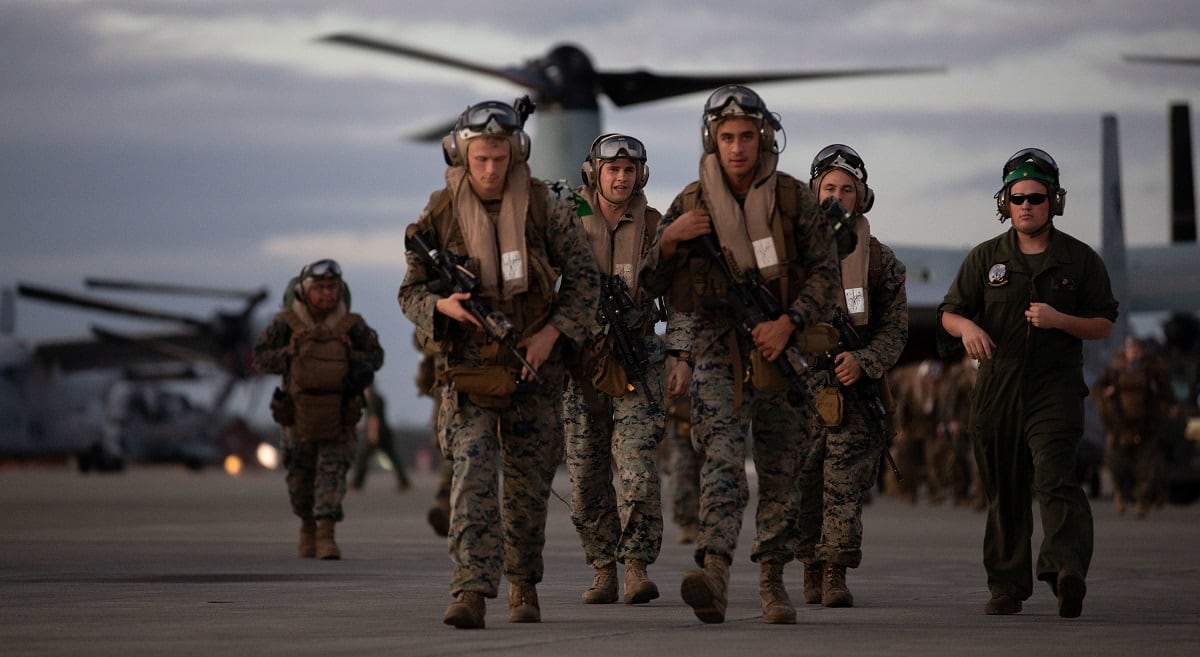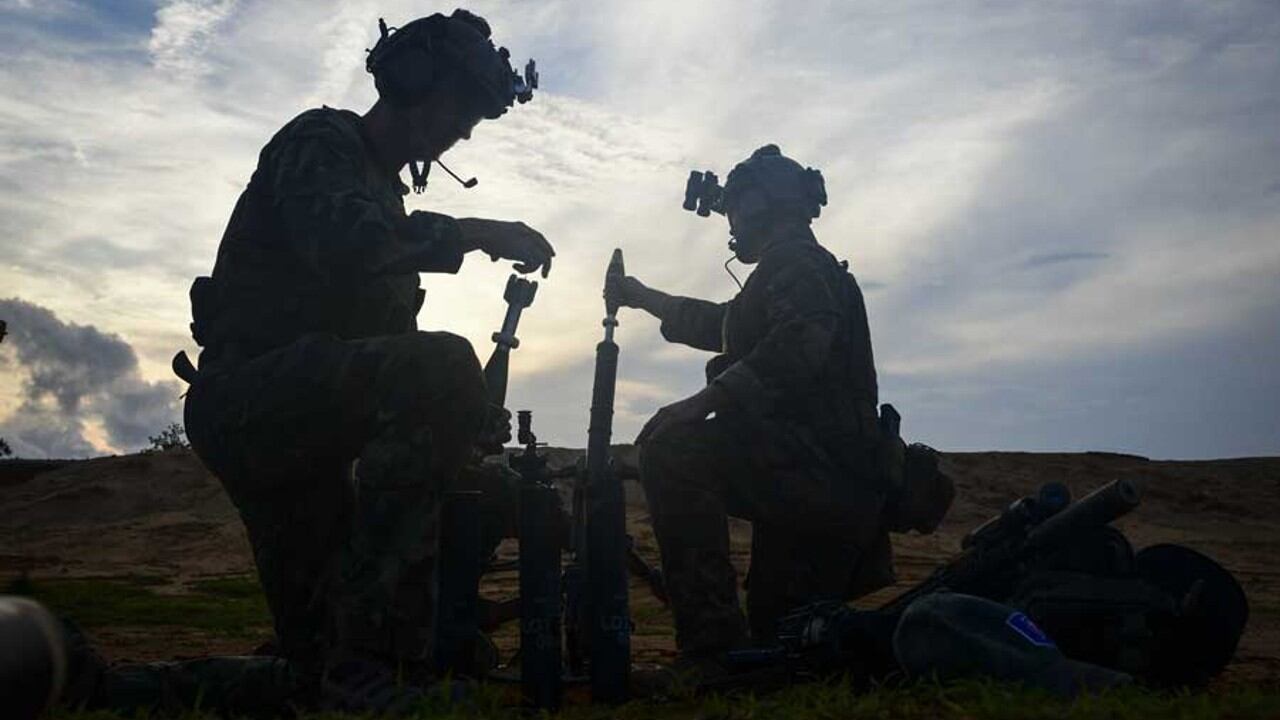The Marine Corps wants to ditch its high turnover rate and its spot as the youngest service in the Department of Defense, said Marine Corps Commandant Gen. David Berger.
The Marine Corps currently, by choice, discharges 75 percent of first term Marines every year, recruiting roughly 36,000 new Marines to fill the ranks.
It’s a process that the Marine Corps once bragged about, but Berger now calls it unsustainable.
“We’re the anomaly and we brag about it, and I think it’s worked for us,” Berger told reporters in early November. “It will not work for us going forward.”
“Our system will break on itself at some point in the next few years … where we wouldn’t be able to recruit, we wouldn’t be able to retain the talent we need,” Berger said.
RELATED

To keep more Marines, the Corps wants to move toward treating those in its rank as people rather than simply inventory pushed through a machine to fill billets.
“We have to treat people like human beings instead of inventory,” Berger said.
The Corps is changing course in the wake of newer science that shows the physical and mental advantages that come with a slightly older force.
They’re improvements that would play a key role in a future war against China, which will see Marines asked to do things they have never done before.
“The machine gunner who is also corpsman, a medic, also has to be able to talk to MQ-9 UAVs and bring in ordnance and understand the satellite connection that is required to do that,” Berger said.
The Corps hopes to increase career flexibility, reduce moves, provide 12 months of parental leave, streamline administrative processes and better cater to the needs of the Marines.
The modern Marine Corps was built on the assumption that humans were at their peak physically in their late teens and early twenties.
But studies on human performance both within the Marine Corps and in the civilian world show that humans reach their physical peak in their mid- to late-twenties, by the time most Marines have left the Corps.
“We based our force on an assumption that (18 to 20-year-olds) were indestructible supermen,” Berger said. “Turns out it’s not. We don’t peak physically or cognitively until our late 20s.”
The small retention rate also creates an ebb and flow in talent, and ability and size of units, which dramatically drop every 18 months as veterans are replaced with a trickle of new Marines from the schoolhouse.
Recent studies have shown that the human brain is not fully developed until a person hits their early to mid-twenties.
The Marine Corps’ reliance on a force that is simply not fully mentally mature may lead to more misconduct and mishaps, Berger said in a new document outlining the Corps’ retention plans.
Berger said replacing those young Marines with higher retention and more mature noncommissioned officers will ultimately save the Corps money, even if it means an increase in personnel salary.
The improved physical and mental performance also will have dividends on the battlefield, where junior Marines will be asked to make decisions that have historically been preserved for those higher up in the chain of command.
“We can’t have a force full of 18 to 21-year-olds,” Berger said.
The efforts to improve retention will be matched a tech overhaul that will streamline reenlistment and other administrative packages, making it simple online form, rather than the current often cumbersome process.
Career stability
Taking the lead from other services, the Marine Corps plans on introducing a talent marketplace that will have units post openings and allow Marines to apply for those vacancies online.
The process should reduce the burden placed on career monitors in deciding who goes where and provide Marines with more choice on their future units.
Though the Corps has still not fully figured out the “mechanics” of the marketplace, Berger has a clear vision of what he wants it to provide.
Historically the Marine Corps has filled vacancies based on rank, military occupational specialty and timing, Sergeant Major of the Marine Corps Troy Black explained.
However, a unit may have secondary qualifications needed to fill the role that the old system would not take into account.
The marketplace would help ensure that units received Marines that had all the training needed for the job.
“For the first time, commanders will have the ability to highlight and prioritize the specific professional and educational backgrounds they seek in their key leaders, detail billet descriptions and expectations, and articulate their command philosophies, family readiness priorities, and other information that might be useful to potential applicants, facilitating a much better match between Marine and commander,” Berger wrote in the 20-page document outlining the Corps’ manpower changes said.
To go along with the marketplace concept, the Corps will attempt to reduce the number of permanent change of stations that take place in a Marines’ career.
Roughly 25,000 Marines undertake a permanent change of station every year, causing unit proficiency to decrease as Marines spend time preparing for or adjusting to a move rather than training.
The family strains associated with the moves have long disrupted the careers of Marines spouses and have historically caused well-qualified Marines to leave the Corps in search of increased stability, the document said.
“Beginning in 2022, monitors will seek to keep Marines and their families in the same geographic duty station as long as opportunities for career growth exist. In other words, monitors will make more regular use of Permanent Change of Assignment (PCA) orders, rather than PCS orders,” Berger said in the document.
Parental leave
In another effort to keep Marines in uniform the Corps is pushing for 12 months of parental leave for primary caregivers and 12 weeks of parental leave for the secondary caregiver.
Unlike other manpower changes proposed in the document, the Corps must change laws surrounding the military leave cycle that prevent Marines from taking a full year of parental leave.
Until those laws are changed, the Corps will instead offer parental leave in exchange for extending a service commitment.
A primary caregiver is currently authorized to take six weeks of convalescent leave if they give birth to the baby, and six weeks of caregiver leave. That Marine will soon be authorized to take 52 weeks of leave, in exchange for extending their contract by 40 weeks.
“As a service, we will encourage Marine fathers and other secondary caregivers to take leave to bond with their newborns, a practice that research indicates results in more stable marriages, better health outcomes for new mothers, and improved educational attainment and emotional stability for children,” Berger wrote.
To help primary caregivers return to work, the Marine Corps is launching a pilot program that will ease them back into their full-time job, starting with virtual or in-person check ins, then slowly moving from working two days a week to five days a week.
Career flexibility
While the Corps seeks to increase geographic stability it simultaneously wants to provide Marines with more career flexibility.
“Rigid career paths are a natural consequence of our industrial age system, which places a premium on building common experience and producing Marines of similar, predictable quality,” Berger said in the document.
The Corps plans on increasing the visibility of the career intermission program, which allows service members to take up to three years off to pursue professional or personal goals, adjust promotion board requirements to reduce penalties Marines receive for nontraditional career paths and plans to introduce a penalty free promotion board opt-out.
The promotion board opt-out will allow Marine officers to decline going before a board if they do not feel qualified, extending the time a Marine has before they are forced out because they were not promoted.
“This opt-out option would enable Marines to pursue opportunities otherwise deemed too ‘risky,’ including extended educational programs. The Army and Air Force have instituted similar policies based on Congressional changes to the law in 2019, and we will seek to benefit from their experience.” Berger wrote in the document.
Similar policies will be put in place for enlisted Marines.
The Marine Corps also will implement policies that acknowledge that some officers’ talent make them ideal for command roles but not necessarily staff positions, while other officers would struggle with command while thriving in staff positions.
The Corps will work on developing a staff officer track, allow officers to indicate whether they wish to pursue a command or staff track, and have fitness reports reflect which track a Marine officer would be particularly suited for.
For “truly exceptional Marines,” the Corps may soon offer unrestricted lateral move opportunities as a retention incentive.
“As long as the Marine meets eligibility criteria, we will place few, if any, restrictions on which MOS assignment they seek,” Berger said in the document.
Company grade officers and majors will be offered the opportunity to opt out of the resident professional military education and recruiting station commanding officer selections that they are automatically screened for.
Under the current system, if a Marine refuses orders to one of these programs they are required to resign their commission.
In 2022 officers will be allowed to remove their name from consideration for those positions without penalty.
Similar issues exist on the enlisted side, with Marines selected by the Headquarters Marine Corps Special Duty Assignments Screening Team, which requires identified Marines to apply for special duty assignments like drill instructor, recruiter or Marine security guard detachment commanders or end their career as a Marine.
Even with the changes, enlisted Marines will not be allowed to opt out of the program, normally called the HSST list.
“There has to be recruiters, there has to be drill instructors and there is a mandate for the Marine Corps to provide (detachment) commanders for our embassies,” Black said.
Ideally the Marine Corps will fill all those roles with volunteers, Black said.
“When there’s no volunteers there’s the HSST list,” he added.
Black did say recent changes to the Marine Corps’ tattoo policy will open up at least some of those special duty assignments to a large pool of Marines who previously would have been disqualified.
The old policy prohibited Marines with tattoos visible in physical training gear to serve on special duty assignments, but the new policy did away with any such restrictions opening the way for drill instructors with full sleeves.
“That opens up a whole new population of individuals who were volunteers previously that couldn’t go on those duties,” Black said.
If the retention and recruitment changes are implemented, the Corps will have a smaller demand for a recruiting infrastructure, slightly lowering the demand side of the equation, Black noted.
“But the requirements have to filled, those won’t go away no matter what happens in manpower management,” he added.




